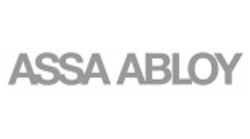Access Control: The Final Frontier for Green Technology
The most popular color in today’s building market is green. Energy efficiency is uppermost on builders’ and customers’ minds, and according to various industry reports, 50 percent of currently slated non-residential building projects will incorporate green materials and processes. The ultimate goal is “net zero” building: a building with zero net energy consumption where the total amount of energy it uses is equal to the amount of renewable energy created on the site.
No one would argue that energy efficiency isn’t an admirable goal, and all you have to do is check your heating bill this winter to know it is something customers want. But an environmentally friendly building is more than just an admirable goal — it is becoming a mandated necessity, and something security integrators need to be aware of.
Many U.S. federal agencies and state and local governments already require or reward LEED (Leadership in Energy and Environmental Design) certification for projects. To name just two examples: Executive Order 13514 mandates that at least 15 percent of existing federal buildings and leases meet Energy Efficiency Guiding Principles by 2015 (you read that right, by next year) with a goal of all new federal buildings achieving net zero status by 2030. In California, all new residential construction must have zero net energy use by 2020.
So what does all this have to do with you, the security dealer/integrator? In order to achieve such efficiency, every aspect of a building’s energy-saving footprint must be considered. And that includes the energy efficiency of the electronic access control (EAC) system.
Energy Efficient Access Control
It’s true — some locks and access control hardware are more energy-efficient than others, and in at least one case, up to 97 percent more. But the concept of energy-efficient security systems is still in its infancy. While everyone knows the importance of efficient HVAC systems and insulated walls and windows, there’s still a vast lack of understanding about security technology among those who are writing the standards for green buildings, and among architects, contractors, specifiers and end-users.
This shouldn’t be true for security integrators — now is the time to get ahead of the curve. Integrators should be thinking about this in the same way that electrical contractors did when they began replacing every fluorescent light bulb in a facility to LED. They sold it as a value proposition — not just a way to meet mandated requirements — and emphasized the amount of money end-users would save by moving to a more energy-efficient and environmentally friendly technology. It is the exact same situation with today’s energy-efficient electronic locking devices, which use much less energy than older solenoid types.
These newer locking devices require fewer power supplies in a given installation, further reducing energy consumption and costs. The locks also generate less heat — and excess heat equals 100 percent wasted energy and then some, since it goes into a building that needs to be air-conditioned. As an additional benefit, the newer locks last longer because they run cooler. Building engineers are starting to take notice of these features in their quest to squeeze out every drop of energy efficiency.
Energy-efficient solutions also provide integrators with process and quality efficiencies. For example, removing power-hungry solenoids from a system enables wire runs to be lengthened, power supplies to be consolidated and 12V to be used for all components around the door. In an increasingly competitive market, creatively implementing new technologies to reduce project costs and increase system quality is ideal.
Making the Sales Pitch
As an integrator, it is important to make your customers aware of these considerations so they will better understand the importance of environmentally friendly security products. Become a trusted advisor who can provide this information as an added value.
A growing number of the companies you approach are going to have a person or even a department in charge of sustainability, and you must be ready to deal with them, as well as the security department, IT department, facilities managers and anyone else with a say in the decision making. More general contractors are going to want to know how the products are made, the materials used and the environmental considerations of the manufacturing processes.
Making the pitch for energy-efficient solutions should be easier because your customers will be receptive to your message — with a proper pitch, they will recognize it will save them money in the long run. If you need an easy way to frame the pitch (pun intended), explain it in terms of cost savings per door opening: Conventional solenoid EAC locks consume about six watts of power, compared to about 0.18 watts for some newer types. At 10 cents per kilowatt-hour (kWh) that saves more than 50 kWh and $5 per year, per opening — which adds up. In a facility with 1,000 doors, that’s more than five megawatt-hours and $5,000 annual savings.
If two integrators bid for a job and only one — you — is pointing out the energy efficiency considerations and the overall impact a green security system will have on a building, you are going to be in a better position to win the job. Obtaining LEED, GBI (Green Building Initiative) and other certifications for you and your company will also be a major advantage.
While security products are clearly “going green,” we are still in the early stages of what is a complete market shift. What is your role in all this? As a security integrator, you will be responsible for what the AIA (American Institute of Architects) calls Integrated Project Delivery (IPD) — your work will literally be an integral part of a building’s total IT, HVAC, design, construction and facilities “ecosystem.”
In order to achieve a net zero building, convergence of every aspect of building design and construction is the rapidly approaching future, which you need to be prepared for today.
Aaron Smith is Director of Sustainable Building Solutions for ASSA ABLOY. To request more information about the company, please visit www.securityinfowatch.com/10212899.



